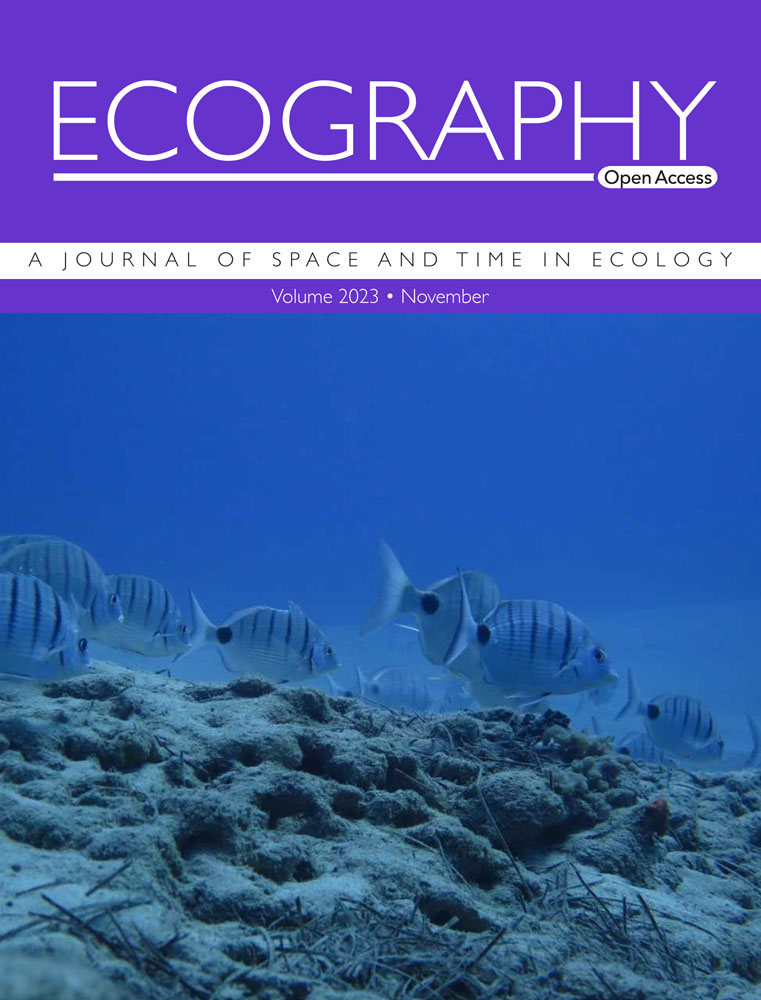在寒冷地区,温度对身体生长的影响比在温暖地区更大,这表明缺乏当地适应能力
IF 5.4
1区 环境科学与生态学
Q1 BIODIVERSITY CONSERVATION
引用次数: 0
摘要
体型是一个关键的功能特征,在许多生物群落中已经下降,部分原因是气候变暖导致个体生长速度的变化。然而,我们对自然种群的生长响应的理解受到相对较短的时间序列的限制,没有大的温度对比和物种内种群对当地温度的未知适应水平。在这项研究中,我们整理了1953年至2015年波罗的海沿岸10个种群的欧亚鲈鱼的回溯计算的年龄长度数据(142 023个年龄长度测量值)。我们使用von Bertalanffy生长方程拟合个体生长轨迹,并使用拟合三个数据源的广义线性混合模型重建局部温度时间序列。在两个被调查的人口中,利用气候变化和核电站人工加热造成的独特的大温度对比,我们使用贝叶斯混合模型估计了人口特定和全球(跨人口)的生长-温度关系,并评估了人口是否在当地适应环境温度。我们发现很少有证据表明身体生长具有局部适应性。种群在同一参考温度下没有独特的最适生长温度和独特的生长速率。相反,将特定人群的曲线映射到全球曲线上,导致寒冷人群的身体增长随着变暖而增加,而温暖人群的身体增长则减少。了解变暖对生长的影响是否具有种群特异性,对于推广气候对体型影响的预测至关重要,体型影响从个体到生态系统功能的多个生物组织水平。本文章由计算机程序翻译,如有差异,请以英文原文为准。
Stronger effect of temperature on body growth in cool than in warm populations suggests lack of local adaptation
Body size is a key functional trait that has declined in many biological communities, partly due to changes in individual growth rates in response to climate warming. However, our understanding of growth responses in natural populations is limited by relatively short time series without large temperature contrasts and unknown levels of adaptation to local temperatures across populations within species. In this study, we collated back-calculated length-at-age data for the fish Eurasian perch Perca fluviatilis from 10 populations along the Baltic Sea coast between 1953 and 2015 (142 023 length-at-age measurements). We fitted individual growth trajectories using the von Bertalanffy growth equation, and reconstructed local temperature time series using generalized linear mixed models fitted to three data sources. Leveraging a uniquely large temperature contrast due to climate change and artificial heating from nuclear power plants in two of the examined populations, we then estimated population-specific and global (across populations) growth–temperature relationships using Bayesian mixed models, and evaluated whether populations are locally adapted to environmental temperatures. We found little evidence for local adaptation of body growth. Populations did not exhibit unique optimum growth temperatures nor unique growth rates at a common reference temperature. Instead, population-specific curves mapped onto a global curve, resulting in body growth increasing with warming in cold populations but decreasing in one of the warmer populations. Understanding whether the effects of warming on growth are population-specific is critical for generalizing predictions of climate impacts on body size, which affects multiple levels of biological organization from individuals to ecosystem functioning.
求助全文
通过发布文献求助,成功后即可免费获取论文全文。
去求助
来源期刊

Ecography
环境科学-生态学
CiteScore
11.60
自引率
3.40%
发文量
122
审稿时长
8-16 weeks
期刊介绍:
ECOGRAPHY publishes exciting, novel, and important articles that significantly advance understanding of ecological or biodiversity patterns in space or time. Papers focusing on conservation or restoration are welcomed, provided they are anchored in ecological theory and convey a general message that goes beyond a single case study. We encourage papers that seek advancing the field through the development and testing of theory or methodology, or by proposing new tools for analysis or interpretation of ecological phenomena. Manuscripts are expected to address general principles in ecology, though they may do so using a specific model system if they adequately frame the problem relative to a generalized ecological question or problem.
Purely descriptive papers are considered only if breaking new ground and/or describing patterns seldom explored. Studies focused on a single species or single location are generally discouraged unless they make a significant contribution to advancing general theory or understanding of biodiversity patterns and processes. Manuscripts merely confirming or marginally extending results of previous work are unlikely to be considered in Ecography.
Papers are judged by virtue of their originality, appeal to general interest, and their contribution to new developments in studies of spatial and temporal ecological patterns. There are no biases with regard to taxon, biome, or biogeographical area.
 求助内容:
求助内容: 应助结果提醒方式:
应助结果提醒方式:


